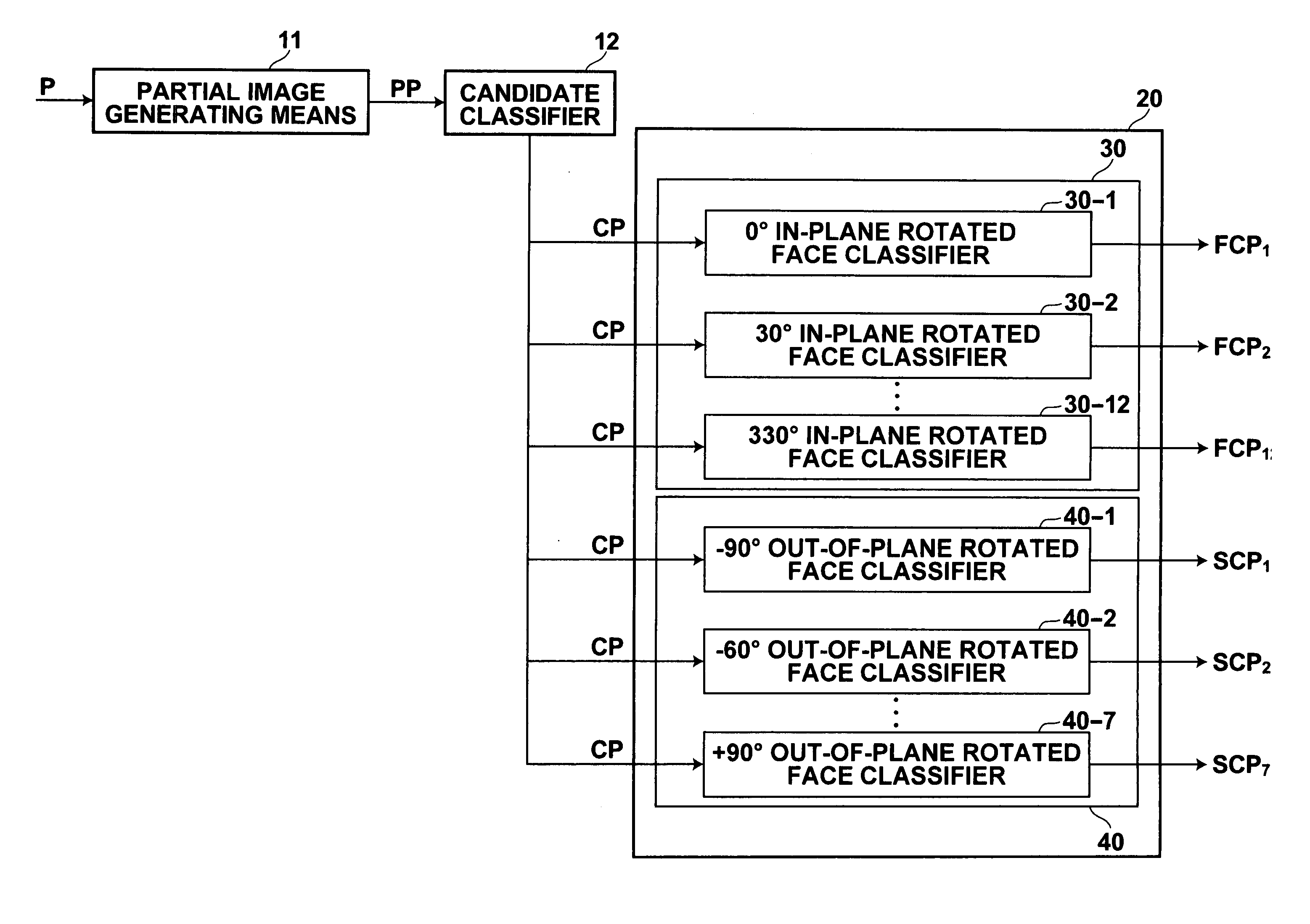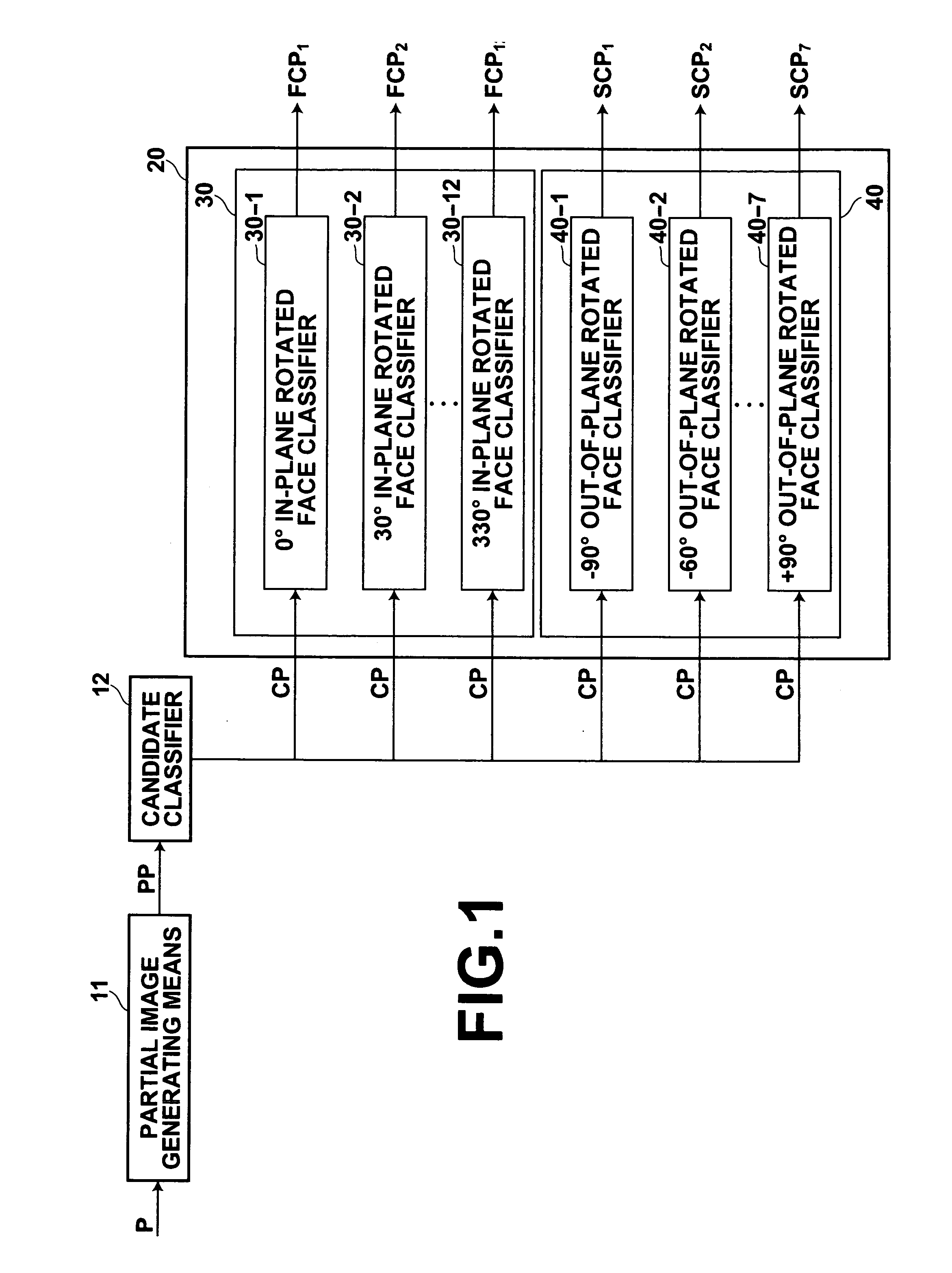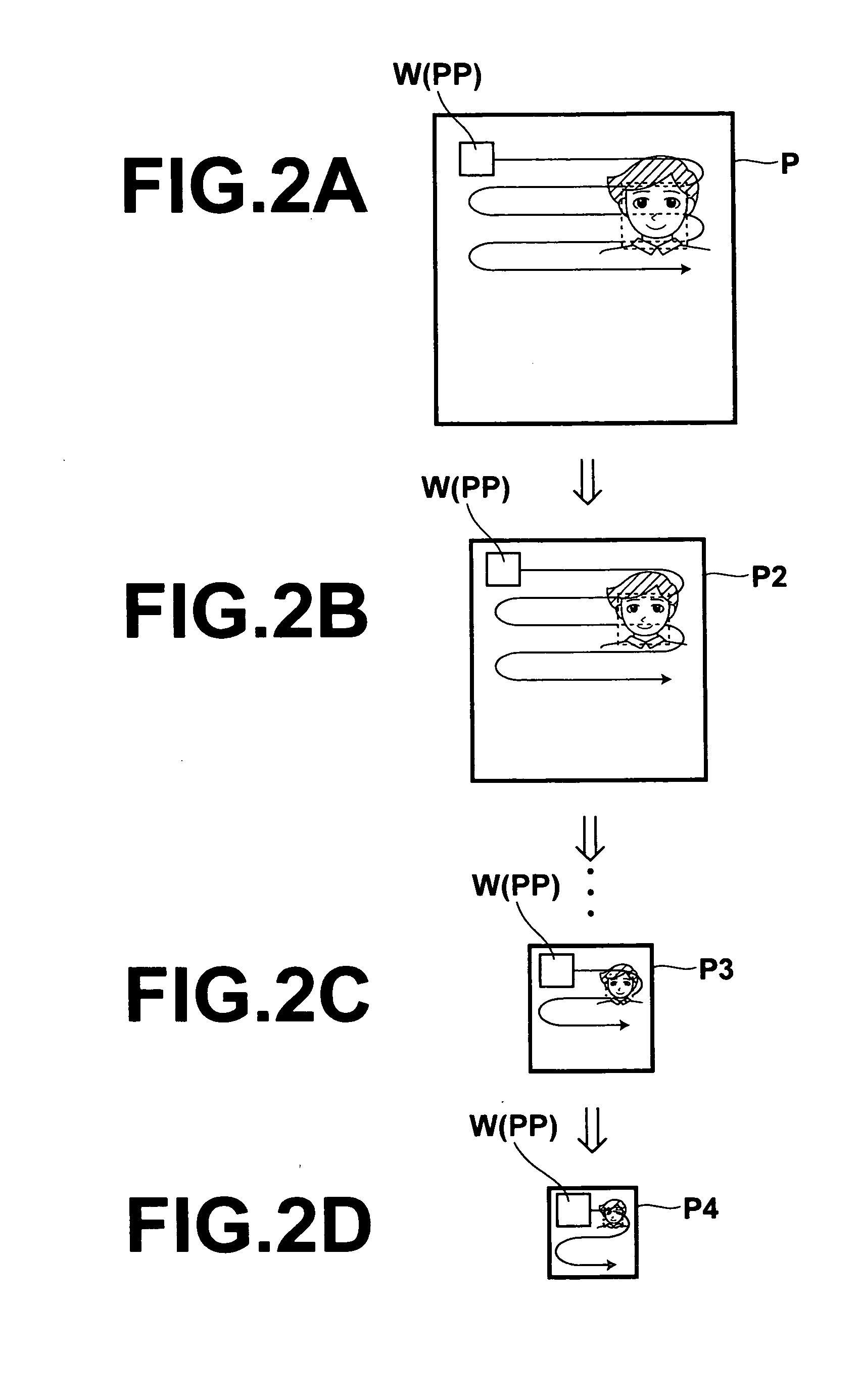Learning method for classifiers, apparatus, and program for discriminating targets
- Summary
- Abstract
- Description
- Claims
- Application Information
AI Technical Summary
Benefits of technology
Problems solved by technology
Method used
Image
Examples
first embodiment
[0058] Hereinafter, embodiments of the target discriminating apparatus of the present invention will be described in detail with reference to the attached drawings. FIG. 1 is a block diagram that illustrates the configuration of a target discriminating apparatus 1 according to the present invention. Note that the configuration of the target discrimination apparatus 1 is realized by executing an object recognition program, which is read into an auxiliary memory device, on a computer (a personal computer, for example). The object recognition program is recorded in a data medium such as a CD-ROM, or distributed via a network such as the Internet, and installed in the computer.
[0059] The target discriminating apparatus 1 of FIG. 1 discriminates faces, which are discrimination targets. The target discriminating apparatus 1 comprises: a partial image generating means 11, for generating partial images PP by scanning a subwindow W across an entire image P; a candidate classifier 12, for det...
second embodiment
[0087]FIG. 9 is a block diagram that illustrates the configuration of a target discrimination apparatus 100 according to the present invention. The target discrimination apparatus 100 will be described with reference to FIG. 9. Note that the constituent parts of the target discrimination apparatus 100 which are the same as those of the target discrimination apparatus 1 will be denoted by the same reference numerals, and detailed descriptions thereof will be omitted.
[0088] The target discriminating apparatus 100 of FIG. 9 differs from the target discriminating apparatus 1 of FIG. 1 in that a candidate classifier 112 comprises: an in-plane rotated candidate detecting means 113; and an out-of-plane rotated candidate detecting means 114. The in-plane rotated candidate detecting means 113 discriminates faces which are rotated in-plane, and the out-of-plane rotated candidate detecting means 114 discriminates faces which are rotated out-of-plane (faces in profile). The in-plane rotated can...
third embodiment
[0091]FIG. 10 is a block diagram that illustrates the configuration of a target discrimination apparatus 200 according to the present invention. The target discrimination apparatus 200 will be described with reference to FIG. 10. Note that the constituent parts of the target discrimination apparatus 200 which are the same as those of the target discrimination apparatus 100 will be denoted by the same reference numerals, and detailed descriptions thereof will be omitted.
[0092] The target discriminating apparatus 200 of FIG. 10 differs from the target discriminating apparatus 100 of FIG. 9 in that a candidate classifier 212 further comprises a candidate narrowing means 210. The candidate narrowing means 210 comprises: a 0°-150° in-plane rotated candidate classifier 220, for discriminating faces which are rotated in-plane within a range of 0° to 150°; and a 180°-330° in-plane rotated candidate classifier 230, for discriminating faces which are rotated in-plane within a range of 180° to...
PUM
 Login to View More
Login to View More Abstract
Description
Claims
Application Information
 Login to View More
Login to View More - Generate Ideas
- Intellectual Property
- Life Sciences
- Materials
- Tech Scout
- Unparalleled Data Quality
- Higher Quality Content
- 60% Fewer Hallucinations
Browse by: Latest US Patents, China's latest patents, Technical Efficacy Thesaurus, Application Domain, Technology Topic, Popular Technical Reports.
© 2025 PatSnap. All rights reserved.Legal|Privacy policy|Modern Slavery Act Transparency Statement|Sitemap|About US| Contact US: help@patsnap.com



